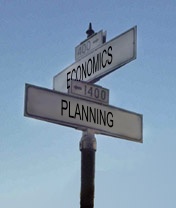Earlier this week the Commercial Appeal had an article about growth of "green collar" workers. These people are working in new fields that have just been developed with jobs in bio-fuel development, energy-efficient buildings, renewable power and repairing energy-efficient cars.
The green economy is described as a $341 billion industry which creates 5.3 million jobs, according to a 2006 study by Management Information Systems Inc. Earlier this fall, Washington D. C. Mayor Adrian Fenty announced the launch of a green-jobs initiative through the development of renewable-energy solutions and of green buildings. D.C. has can see that the economy is in transition with rising energy costs and demand for a greener economy is coming.
Many cities throughout the country are recognizing this green trend and developing incentives to encourage green buildings which in turn can develop and support green industry in cities. Incentives for green building include expedited permit review and reduced permit fees, tax incentives and property tax abatements for Leadership in Energy and Environmental Design (LEED) buildings, tax credits for green built affordable housing, and density bonuses among others.
Sustainable construction is one of the fastest-growing segments of the commercial building industry. The annual market for green building products and services is estimated to be $12 billion in 2007 according to the U.S. Green Building Council. Green building is defined as “design and construction practices that meet specified standards, resolving much of the negative impacts of buildings on their occupants and on the environment.” The LEED Green Building Rating System is the widely accepted standard for the design and performance of green buildings. Levels of voluntary LEED certification are based on the number of points awarded to a building project. Points are based on standards in six areas: site planning, water efficiency, energy and atmosphere, material use, indoor environmental quality, and innovation and design process.
Mayors around the country are advancing bold visions for making their cities more environmentally sustainable through strategies to reduce greenhouse gas emissions, manage water and energy resources and create more livable communities. Ensuring new and existing buildings are healthy and efficient should be a key strategy for any green city. Governments at all levels see many long-term cost savings in sustainable building technologies as major property owners with large capital and maintenance budgets. 46 percent of LEED-certified projects in the U.S. are owned by federal, state, and local governments and 681 mayors have signed the U.S. Mayors Climate Protection Agreement which pledges that their city will meet or beat the U.S. target of the Kyoto Treaty to reduce greenhouse gas emissions to 7 percent below 1990 levels by 2012.
The economic and environmental goals of cities can be met through an environmental sustainable agenda that concentrates on attracting and developing the green economic sector. The green economic sector includes all businesses that provide environmental goods and services such as alternative sources of energy and pollution prevention technology. This burgeoning sector offers opportunities for revenue generation and job growth within the city.
Unlike traditional forms of economic development, green economic development, if practiced equitably, is uniquely positioned to present solutions for some of the conditions that disproportionately impact low-income communities: environmental degradation, lack of quality jobs, and economic decline. Equitable green economic development offers the potential for living-wage jobs in non-polluting industries that provide a clear career ladder for low-income residents.
Are green collar jobs the future? Should Memphis be investing in this new industry rather than trying to recruit manufacturing and distribution jobs that may require little education or skill? With rising energy costs and growing environmental awareness it should be interesting to see whether green incentives will be the new economic development tool used by cities.

No comments:
Post a Comment